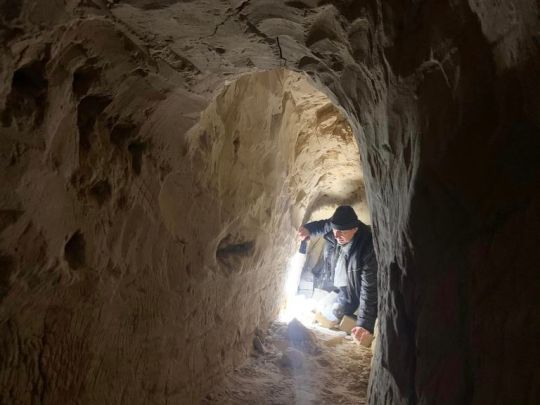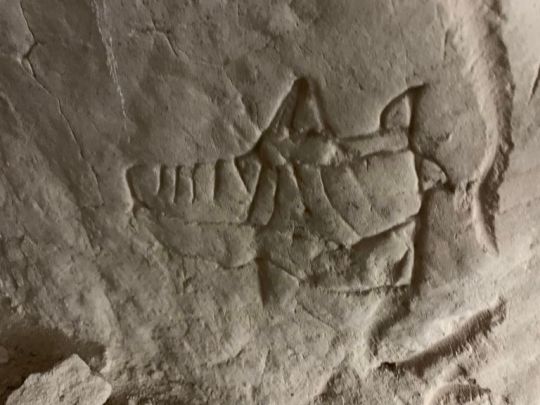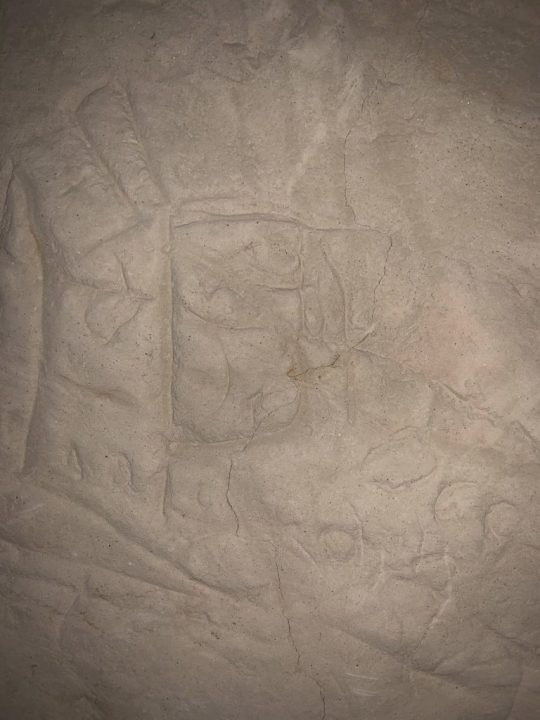#Late Kyivan Rus’ era
Explore tagged Tumblr posts
Photo






An Ancient Cave Complex Discovered in Kyiv
Dmytro Perov, a conservationist at Kyiv’s Center for Urban Development, told Radio Kultura that the caves were discovered next to a demolished house that Kyiv housing authorities had deemed unsafe for habitation.
Actually, Dmytro Perov followed his grandmother’s clues. Perov’s grandmother used to talk about a large stone house next to an old cave, but no one knew its location of it. According to Perov, who had previously examined the area several times, only the front facia of the house remained, concealed by bushes.
The conservationist told reporters that he and his friends decided to go to the old house “on a small expedition to look for caves,” and they discovered an entrance. The first archaeological explorations in the Voznesensky Caves were carried out by Perov and a group of researchers from the Institute of Archaeology last Saturday. Timur Bobrovskyi, an archaeology professor at the Sofia Kyivska reserve, said he was “amazed that such a treasure was found in the center of Kyiv” after spending three hours exploring the cave.
The team discovered pottery fragments from the Late Kyivan Rus’ era, an Eastern and Northern European state that existed from the late ninth to the middle of the thirteenth century, in the cave’s northern section.
Perov wrote on Facebook that the team scoured around 40 meters (131 feet) of caves, including the lower cave complex, which he claims is twice as long as the upper passage and has a series of “radial branches.” The most significant discovery, according to Petrov, was “a set of Kyivan Rus hieroglyphs and Varangian symbols from the Early Rus period,” when the region was under the control of Varangian rulers.
While more investigation is required to confirm it, according to Dmytro Perov, they think that some of the carved symbols may date all the way back to the fifth or sixth centuries BC. He says that “animistic images of animals and graffiti” from the Varyaz period, including the rune Algiz (“chicken’s foot”), were also discovered on the walls. This was an ancient Varangian charm, a symbol of safety and longevity.
Several Hellenic Greek colonies were established on the northern coast of the Black Sea, on the Crimean Peninsula, and along the Sea of Azov between the 7th and 6th centuries BC. The steppe hinterland was occupied by the Cimmerians, Scythians, and Sarmatians who traded with the Greek/Roman colonies after a period of control by the Roman empire during the first millennium BC.
Rurik, a Varangian or Viking prince, established the Kyivan state in the latter part of the ninth century. Up until the 13th century, his descendants established and controlled a global trade route to the west. However, the Kyivan state was made up of East Slavic, Norse, and Finnic peoples, making it difficult to determine who left the carved symbols on the cave walls.
#An Ancient Cave Complex Discovered in Kyiv#Late Kyivan Rus’ era#archeology#archeolgst#ancient artifacts#history#history news#ancient history#ancient culture#ancient civilizations#ukraine#ukrainian history
28 notes
·
View notes
Note
Would you say a lot of practicing Slavic paganism is UPG? How do you go about reconstructing a religion with so little sources as well as knowing what’s fakelore?
The key to recognizing fakelore is accepting that not all sources of information are made equal, learning to recognize the ones that are more valuable/reliable and then consuming as many as you can. This way you will become able to recognize origins of a lot of the fakelore online and discern when something just doesn’t click — a lot of times the stories you find on Rodnovery websites are based in something real but they are either extremely embellished, clearly misunderstood or presented in a very misleading way. It’s also fairly common to see people uncrtically repeating claims found in medieval chronicles. Medieval chronicles described unicorns, headless people with faces on their stomachs and the ancestors of the chronicler’s patron defeating Julius Cesar and descending from gods or mythical creatures, please do not accept every word said in them uncritically. When reading fragments of historical sources you always want to support it with a bit of modern commentary by somebody who specializes in that era.
I’d say there is quite a lot of room for flexibility exactly because of how little we know. And also because there was never one centralized Slavic religion, a sacred text central to the religion nor a set of moral norms dictated by the religion (well perhaps aside from „do not break your promises”).
In my experience Slavic paganism in practice consists mostly of you, vibing with the gods, spirits and traditions you consider relevant, figuring out what works and why. And while having some knowledge and understanding of Slavic history, culture and broader spirituality is essential to archieving a practice that goes deeper than mere aesthetics, because of all the vital info that we don’t have at one point or another we all have to make some stuff up introduce personal practices based on our individual understanding of the Slavic culture and mythology.
You will always have to face a lot of inconsistencies for reasons beyond our control. I shall quote Simon Franklin speaking on the subject of researching Kyivan Rus — I find his words to also be perfectly applicable to the research of Slavic paganism:
Historians of Kievan culture spend much of their time trying to find plausible ways to fill the gaps between the sparse fragments of real evidence, contemplating the unknown and the unknowable. Any connected account of Kievan culture is an agglomeration of hypotheses. Worse than that: virtually any reading of any word in a Kievan text is hypothetical. The manuscripts are late, the variants are prolific. Either we retreat behind raw data, or else we accept that choices have to be made but that certainty is unattainable, that there is an implicit “perhaps” in every statement.
- Simon Franklin, quoted in Reimagining Europe: Kievan Rus in the Medieval World by Christian Raffensperger
Have a good day!
72 notes
·
View notes